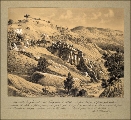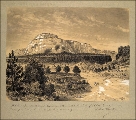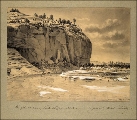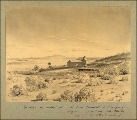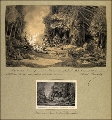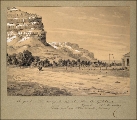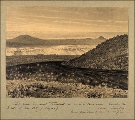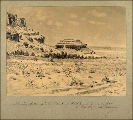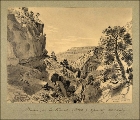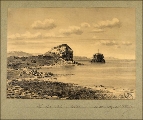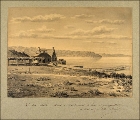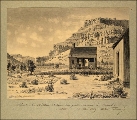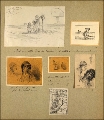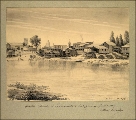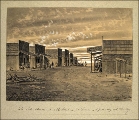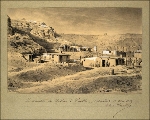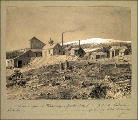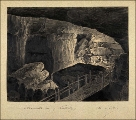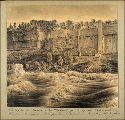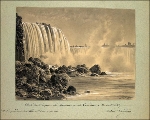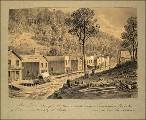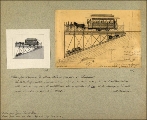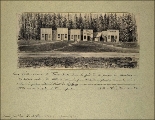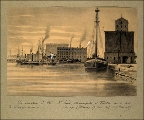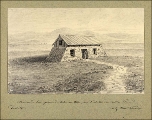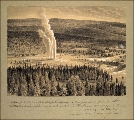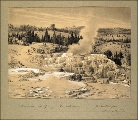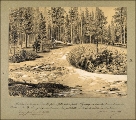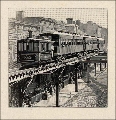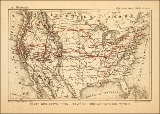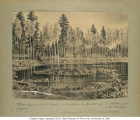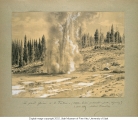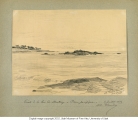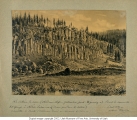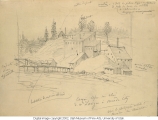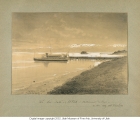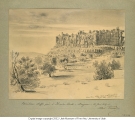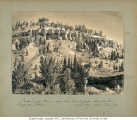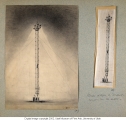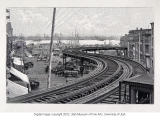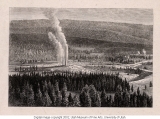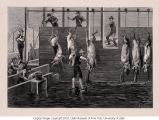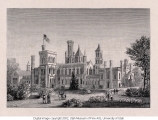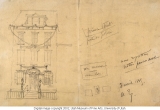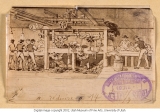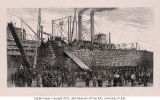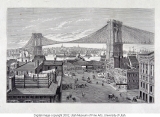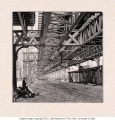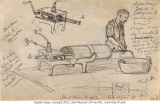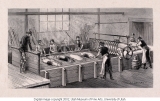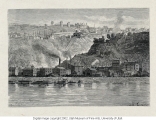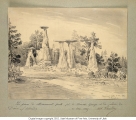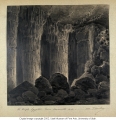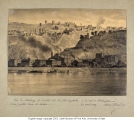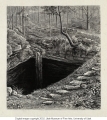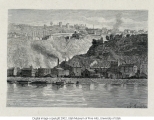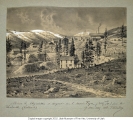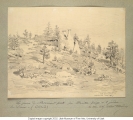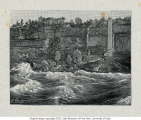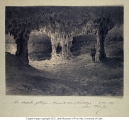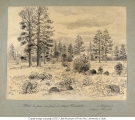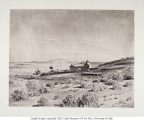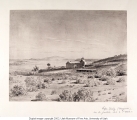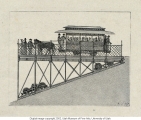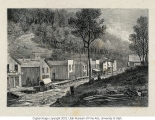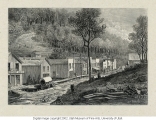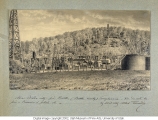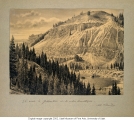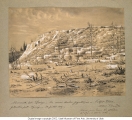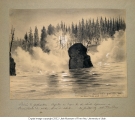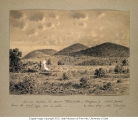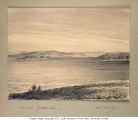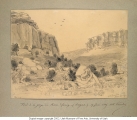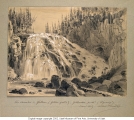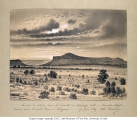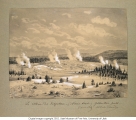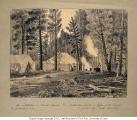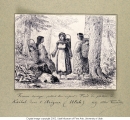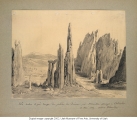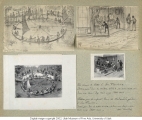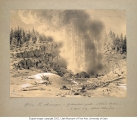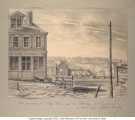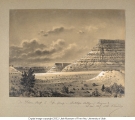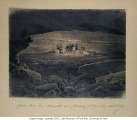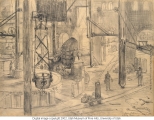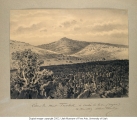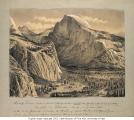| Identifier |
1978_300a_niagraFalls.jpg |
| Title |
Niagara Falls-American Falls-Cave of the Winds |
| Alternate Title |
Chute du Niagara, coté Americain - Cave of the Winds grotte des vents - Derrière la chute |
| Artist's Notation |
"paru dans La Nature." |
| Creator |
Tissandier, Albert 1839-1906 |
| Subject |
Niagara Falls (N.Y. and Ont.)--1880-1890; Waterfalls--Niagara Falls (N.Y. and Ont.)--1880-1890; Rainbows--1880-1890 |
| Published Location |
This image, engraved by H[enri] T[hiriat], was published in La Nature, no 697 (9 Oct 1886), as figure 1 (p. 296), to accompany the twelfth installment of Albert Tissandier's "Lettres d'Amérique", with the caption "La grotte des vents derrière les chutes américaines. (D'après nature.)" http://cnum.cnam.fr/CGI/fpage.cgi?4KY28.27/300/100/432/0/0 The same image appears as figure 80 (p. 281) in Albert Tissandier's book Six mois aux États-Unis : voyage d'un touriste dans l'Amérique du nord suivi d'une excursion à Panama (Paris : G. Masson, [1886]), with the caption "La Grotte des vents, derrière les chutes américaines, Niagara (d'après nature)". Associated text (p. 287-288): "On reçoit sur le dos une véritable pluie de diamants et des arcs-en-ciel merveilleux se multiplient à nos côtés (fig. 80). C'est un enchantement que cette vapeur lumineuse qui vous suffoque légèrement quelquefois, à vrai dire, sans cependant trop vous incommoder. On reste, malgré soi, près des rochers, à regarder cette chute d'eau gigantesque qui se précipite devant vos yeux. L'admiration vous saisit. Le bruit assourdissant produit par la masse des eaux vous étonne d'abord; puis on est comme fasciné par l'éclat de cette cataracte aux reflets flamboyants sous les rayons du soleil. Le long des rochers, des planches solidement fixées ont été posées; elles sont munies d'une légère balustrade, de sorte que, malgré tout, on peut passer sans danger devant et derrière les chutes de la Cave of the Winds. Il faut choisir pour cette petite expédition une journée de soleil, sans cela, la peine qu'on se donne serait inutile, l'illumination des cascades n'existant plus." Reproduced in the exhibition catalog, Albert Tissandier : Drawings of nature and industry in the United States, 1885, by Mary F. Francey ([Salt Lake City, UT] : Utah Museum of Fine Arts, 2001), p. 61. |
| Related Image |
For the engraving done by Henri Thiriat from this drawing see http://content.lib.utah.edu/cgi-bin/docviewer.exe?CISOROOT=/UMFA&CISOPTR=209&CISOSHOW=128 |
| Short Essay |
The first description of Niagara Falls was written in 1697 by the French explorer, Father Louis Hennepin, and Jacob Schoellkopf pioneered the falls as an important source of hydroelectric power in 1881. The local economy has realized enormous benefits from industries attracted to the area by the inexpensive and abundant power generated by the massive falls. Tissandier approached the most celebrated subject in American landscape painting with all the self-assurance of an educated French artist. Although the falls had been rendered by a succession of eighteenth century topographers, John Vanderlyn was the first professionally trained American artist credited with drawings of the Falls in 1801. His work was followed by such major figures in American art as John Trumbull, Edward Hicks, Thomas Cole, Karl Bodmer, Jasper Cropsey and John F. Kensett and Frederic Church, all of whom were drawn to landscape subjects by predominant and persistent theories of sublime nature. Tissandier's drawings have none of the picturesque romantic qualities of the responses by American artists to the falls; instead his straightforward renderings are objective recordings of his observations of the energy and scale of the Falls as symbolic of the economic power of the United States. Instead of communicating a spiritual message about a spiritually dominant nature, the two small figures in the Cave of the Winds are placed there to provide information about scale. The view in the second drawing is from the Canadian side of the falls. The two tiny figures on a rock in the center of the composition emphasize even more clearly the monumentality and force of the cascading water. Like many American artists at the time, Tissandier also saw the American landscape as a marketable commodity. While American artists were marketing the moral virtue of nature, Tissandier's drawings of the Falls, as well as the others he produced on his route through the United States, were intended to introduce French travelers to a nature vastly different from domesticated European scenery. |
| Publisher |
Utah Museum of Fine Arts |
| Contributors |
Mary F. Francey |
| Date |
1885-08-22 |
| Type |
Image |
| Format |
application/pdf |
| Source |
Albert Tissandier: Drawings of Nature and Industry in the United States |
| Language |
fra |
| Rights Management |
Digital image c2001 Utah Museum of Fine Arts, University of Utah |
| Source Physical Dimensions |
41.91 cm High x 30.48 cm Wide |
| Source Characteristics |
Graphite and brush applied ink on paper |
| Light Source |
Kaiser Softlite ProVision 6x55W flourescent 5400K daylight |
| Archival Resolution |
TIFF: 4055 x 5057 pixels |
| Display Resolution |
JPEG: 900 x 1229 pixels |
| Bit Depth |
36-bit color |
| Scanning Device |
Leica S1 Pro scanning camera; Hasselblad CFi 50mm F/4 lens; f/11 |
| Exhibit Catalog |
ISBN: 0-9657215-0-7; Library of Congress Catalog Number: 2001094211 |
| Setname |
uu_umfa_at |
| ID |
415821 |
| Reference URL |
https://collections.lib.utah.edu/ark:/87278/s6bk1cds/415821 |

